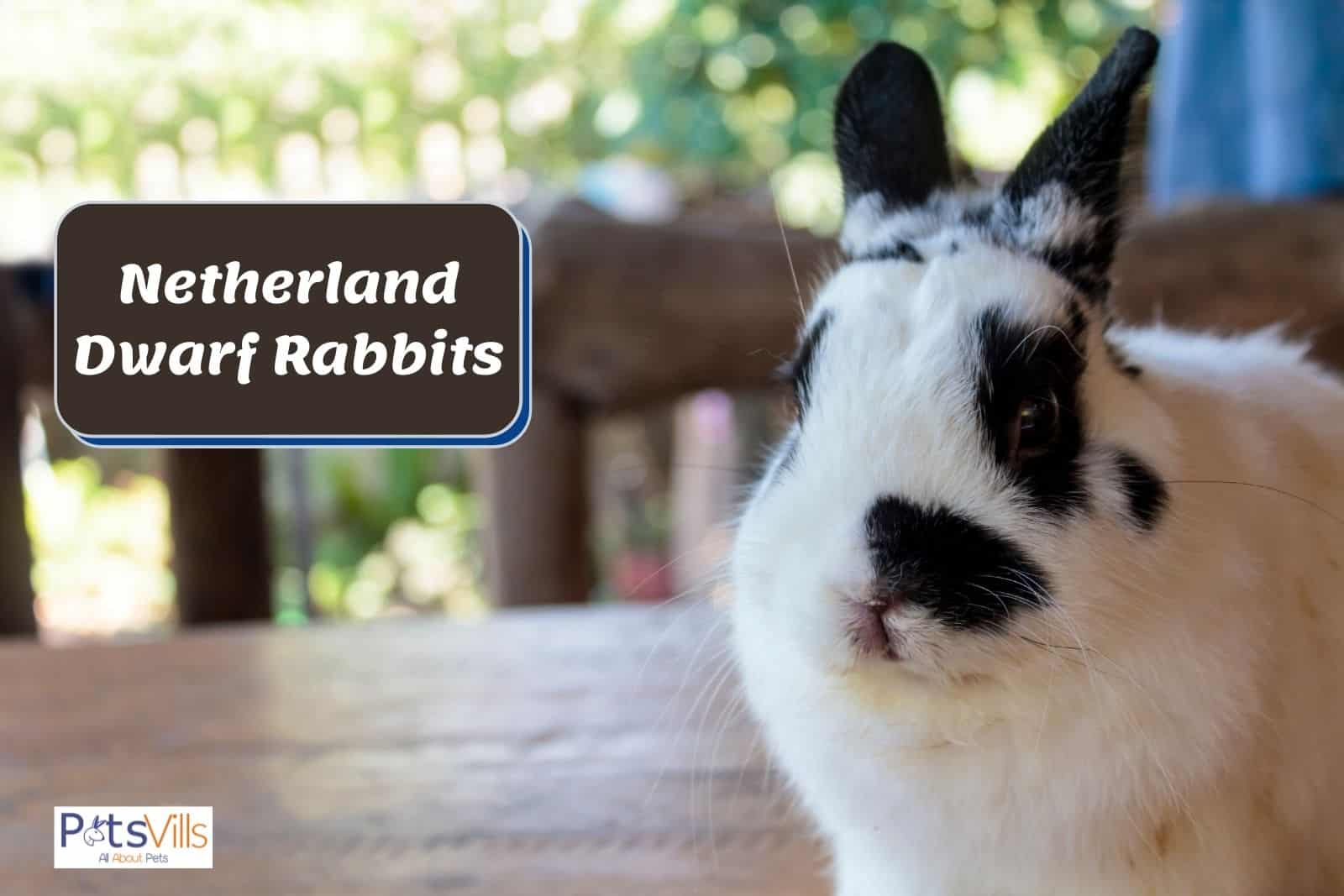The Netherland Dwarf is one of the smallest rabbits and cutest.
They were first created by crossing Polish rabbits with small, wild rabbits, and the result was offspring of many different colors. That wide variety of colors has made them a popular pet worldwide.
Netherland Dwarf rabbits are mostly friendly and well-suited as domesticated animals or for shows
The breed can, at times, be fearful and aggressive, but careful breeding has selected the friendliest rabbits.
Netherland Dwarfs are primarily friendly and well-suited as domesticated animals or for shows.
They can be skittish at times due to their high energy levels, making them exciting pets, especially if there are children around.
As long as they have enough space to run around in, they make for excellent pets.
READ MORE: Fun Facts About Mini Rex Bunnies
Table of Contents
Netherland Dwarf Rabbit Color and Appearence
Netherland Dwarfs [1] have disproportionately large eyes compared to their heads. This is one of many reasons why they look so cute.
When you see those large eyes staring up at you, you cannot help but fall in love with them.
The head is large when compared to the short and stout body.
The ears are short and often stick straight up, giving these bunnies an alert look.
The round face finishes the cute look.
Being dwarf rabbits, they have small features, giving them a permanent child-like appearance.
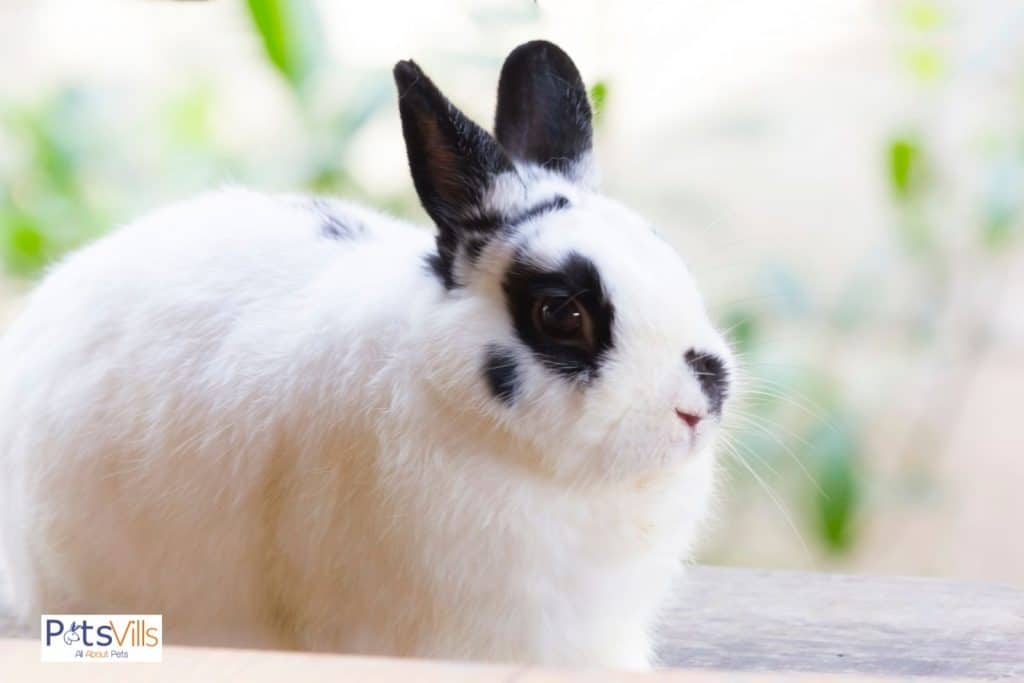
Netherland Dwarfs [2] come in a wide variety of colors, making them a great choice as a pet.
From the classic tones such as Ruby Eyed White, Black, and Blue to more obscure (and cool-sounding) colors like Siamese Smoke, Magpie, and Red Agouti, there is a color of Netherland Dwarf with which everyone will fall in love.
Watch this video for additional information.
How Do I Care for a Netherland Dwarf Rabbit?
Netherland dwarfs are small rabbits, but they still need some space to run around in.
The minimum recommended cage size is 24” x 18” x 14”, though you always recommend that you go as large as possible.
Invest in as large a cage as you can, or combine the cage with a large run that you can let your bunny loose in.
Solid bottoms are recommended for the cage, though Netherland Dwarfs can get around on wire-bottomed cages provided that there is some padding on the wire or a place where they can move off of the wire to rest their feet.
Keep your bunny well fed and watered, and make time to play with your rabbit often.
Litter trains your bunny as soon as you can to ensure that a solid-bottomed cage does not become too soiled.
Have an enclosed space to hide and sleep or a bed crafted from hay or aspen shavings.
Give the cage a thorough clean at least once a week, and also remove any droppings as often as you can (you would not like to live with your poo).
Keep the cage in an area of your home where there are no drafts or direct sunlight.
This small breed of rabbit does not do well in the cold or extreme heat, so make sure to protect [3] your rabbit as much as you can.
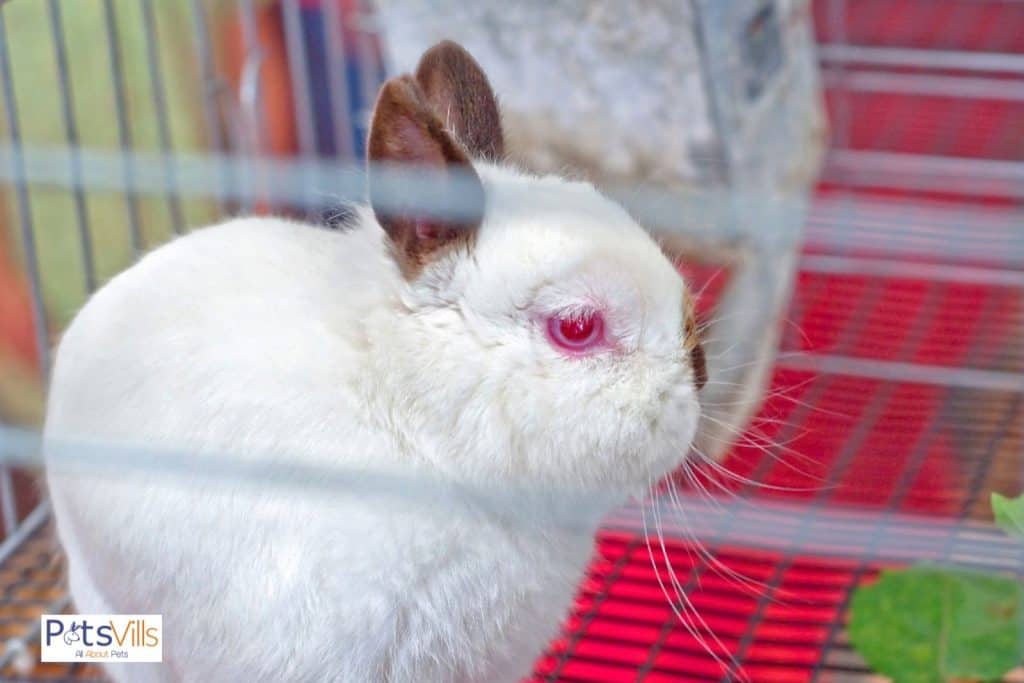
Netherland Dwarfs do not need a lot of grooming and will take care of most of the grooming themselves.
If they are shedding (and often when they are not), they may appreciate some help with removing their excess fur.
Using a soft comb or brush will help to remove the excess fur. Brush in the natural direction of their coat, and use that as an opportunity to check for any parasites.
You can trim the tips of their nails when needed or take them to a vet to have it done.
Keep your bunny well fed and watered [3], and make time to play with your rabbit often.
How Active Are Netherland Dwarfs Rabbit?
Netherland Dwarfs may be small, but they still need as much room [4] as other breeds. We have already mentioned the need for a large cage and a run for your rabbit to exercise in.
We recommend allowing your rabbit to run around your home or a part of your home. If you are letting your bunny roam free, then ensure that you take measures to protect your bunny (and your home).
Ensure that there are no wires to be chewed, food to be gotten into, or fabric that you do not want holes in. You should always be around when you let your bunny out of their cage.
Although Netherland Dwarfs are active and often skittish, they may not be the best animals for children to play with.
Kids will love to see them jumping and hopping around or running as fast as they can across the floor.
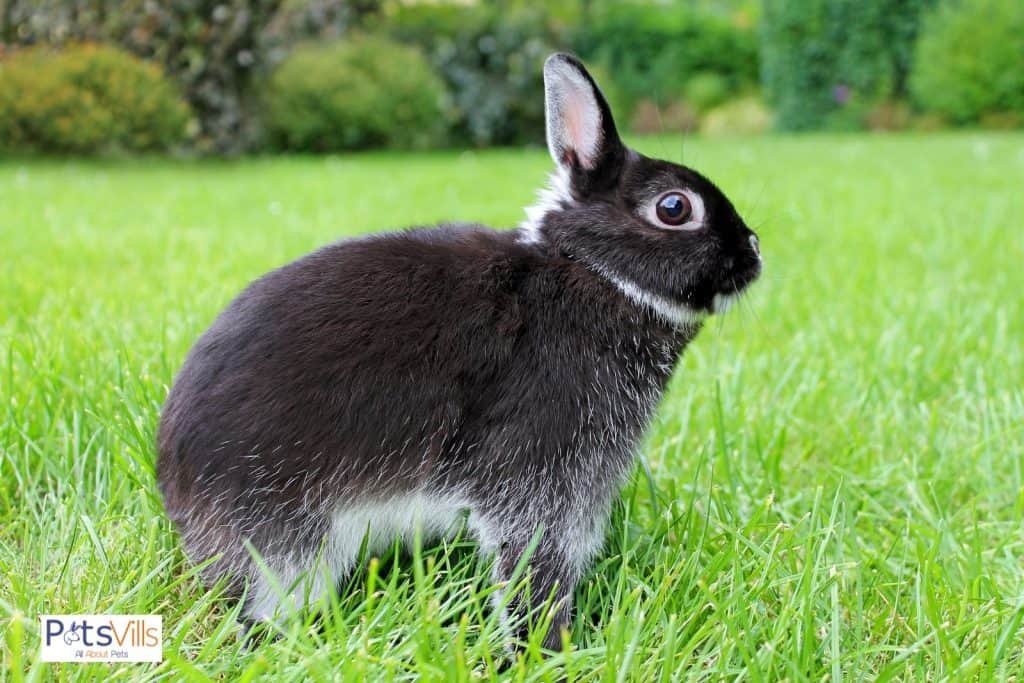
Netherland Dwarfs can sometimes be aggressive and do not always like to be held.
When your pet is out of their cage, let them come to you instead of you going to them.
Also Check: Fun Facts About Lionhead Bunny
What Should I Feed My Netherland Dwarf Rabbit?
The main diet of a Netherland Dwarf should consist of pellets, fresh hay, water, and fresh vegetables. The amounts you feed your rabbit will mainly depend on their age.
When Netherland Dwarfs are born, they nurse from their mother for the first three weeks.
At four weeks, they can begin to nibble on alfalfa pellets or hay, and at seven weeks, water can be added in when the nursing ends.
Once the digestive system of this tiny rabbit has developed, you can introduce fresh vegetables and greens.
A Netherland Dwarf is ready to handle vegetables between four and seven months old.
Start small and introduce one kind of vegetable at a time.
Organic is best.
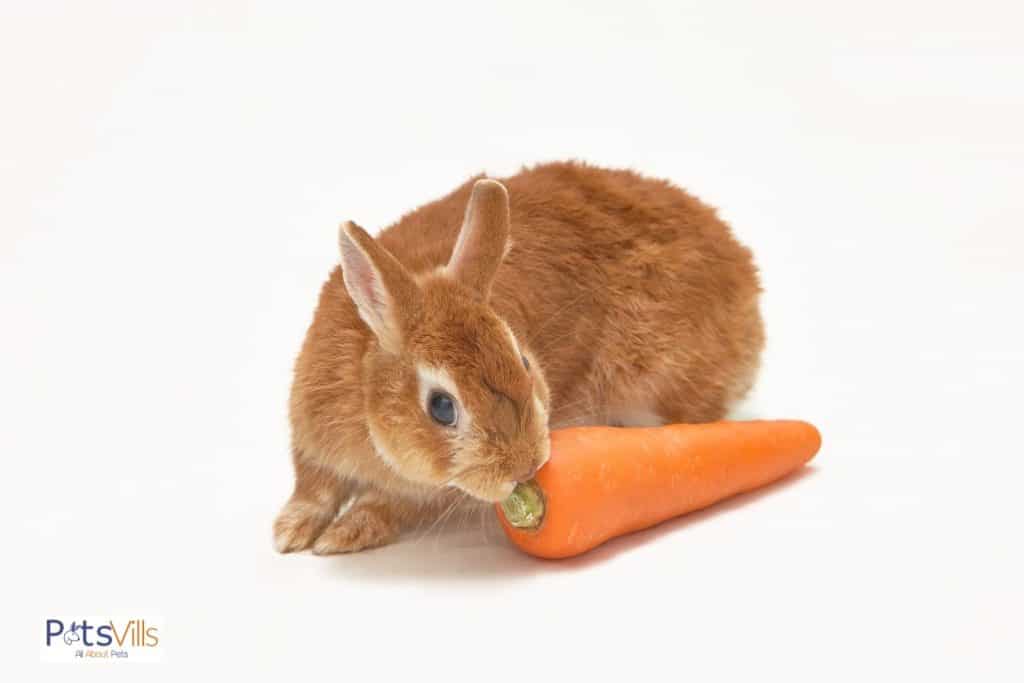
Alfalfa should be used up until the rabbit is around seven months old, at which time you can switch over to hay.
A fully grown Netherland Dwarf should have the following amounts of daily food: 1/8 cup of pellets per pound of body weight, unlimited timothy hay, unlimited freshwater, and some fresh vegetables.
Healthcare for a Netherland Dwarf Rabbit
You may need to protect your bunny against some severe diseases, but you do not need to necessarily vaccinate your bunny, depending on the country you live in.
We recommend talking to your vet to see if your bunny is at risk of any diseases and should be vaccinated. Your vet will also be able to guide you when it comes to parasite control and worming.
You should also consult your vet to check the dental health of your bunny, but there are steps that you can take to ensure that your rabbit’s teeth are in peak condition.
Rabbits like to chew. They do this to control the growth of their teeth. By feeding your bunny pellets and hay, along with providing chew toys, you can help your bunny’s teeth.
Also Check: The Facts About English Lop Rabbits
Netherland Dwarfs Rabbit as Pets
Netherland Dwarfs are great bunnies to keep as pets. They are inexpensive to care for, do not require a lot of maintenance and upkeep, and are energetic and lively.
They are cute and appealing to both adults and kids, and they love to run and hop around.
Netherland Dwarfs are great bunnies to keep as pets
This bunny breed can be skittish at first but will warm to you with a lot of exposure.
If you let them free in a run or your home, then take the time to be in there with them, and they will soon grow to love you.
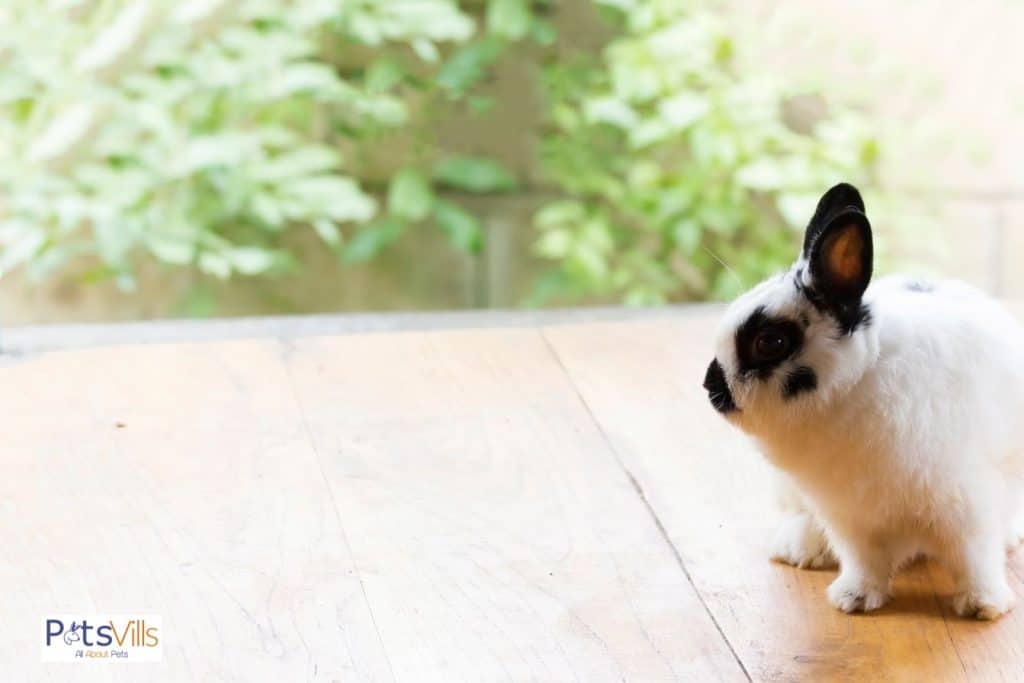
We recommend petting them when they come to you, but Netherland Dwarfs can be aggressive if you rub them when they do not want to be petted or try to pick them up when they would rather be doing something else.
They are well-suited to being around older kids and adults but may not be the best pet for young kids who want to interact a lot with a bunny.
Netherland Dwarfs love to chew, so choose toys they can chew on. Look for natural fibers, especially wood, for them to gnaw on.
Branches and sticks will be a welcome addition to their home but stay away from cedar as the aroma can aggravate them.
As they are so active, toys that encourage them to burn off their energy will help your rabbit play. Look for balls or any other toy which can be rolled or interacted with.
If you have a Lionhead rabbit, you know how special and unique they are – and they deserve a name that reflects their one-of-a-kind personality. Check out the “Lionhead rabbit names” video for some truly creative and adorable ideas that are sure to inspire you!
References
1. Netherland Dwarf Rabbit – Top Facts & Breed Guide [Internet]. Available from: https://animalcorner.org/rabbit-breeds/netherland-dwarf-rabbit/
2. Peter J. Netherland Dwarf Rabbit – Facts, Lifespan and More! – PetRabbits.org [Internet]. Pet Rabbits.org | Everything You Should Know About Pet Rabbits. 2020 [cited 2022 Jan 27]. Available from: https://www.petrabbits.org/netherland-dwarf-rabbit/
3. Bunny H. Netherland Dwarf Rabbit Care Sheet | Here Bunny [Internet]. herebunny.com. 2020. Available from: https://herebunny.com/care/netherland-dwarf
4. Tjoedhilde. The Ultimate Guide to Dwarf Rabbit Care [Internet]. PetHelpful. [cited 2022 Jan 27]. Available from: https://pethelpful.com/rabbits/dwarf-rabbit-care
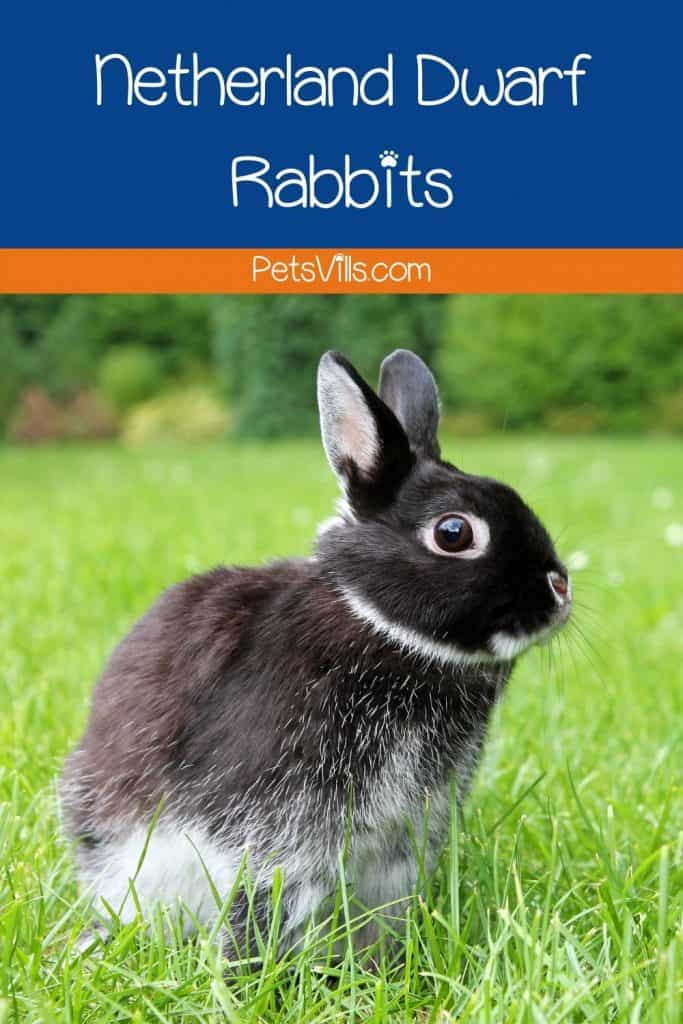
What do you love most about Netherland dwarf rabbits? Please share with us below!
Barry Stingmore is a British content writer living in Fuerteventura, Spain. An animal lover at heart, he shares his home with a dog and four rescue cats and has a passion for writing about animals big and small.
Barry loves finding answers to your animal-related questions, the more research involved the better! You can rely on him to find the facts.
Find him on FACEBOOK, TWITTER AND Linkedin
Read his latest ARTICLES.
Find more about him HERE.

